Weighted Average of Outstanding Shares Calculation, Example
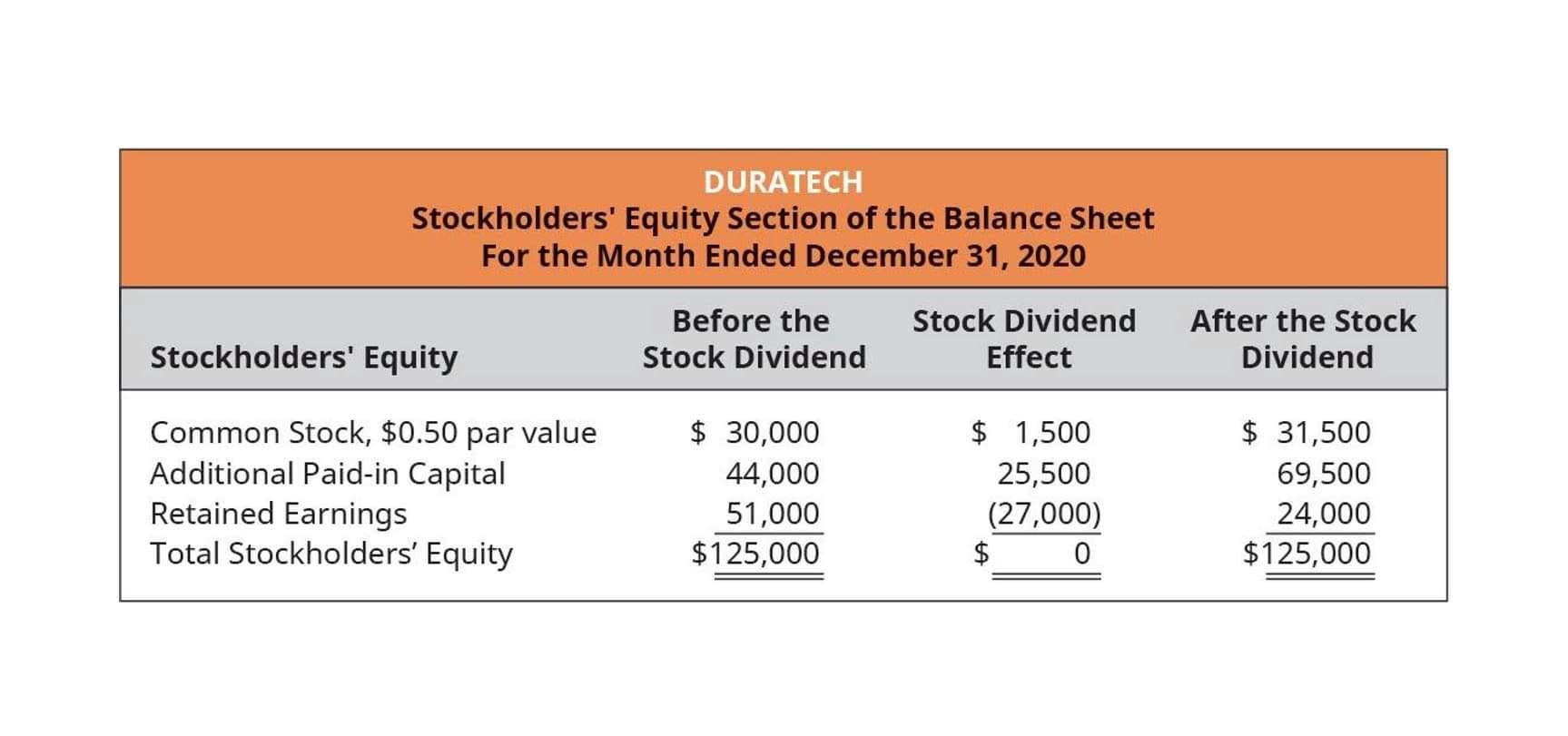
The number of shares outstanding consists of shares held by institutions, restricted shares held by company insiders, and shares available for investors to buy and sell on the open market. A company’s outstanding shares decrease when there is a reverse stock split. A company generally embarks on a reverse split or share consolidation to bring its share price into the minimum range necessary to satisfy exchange listing requirements.
How to Calculate the Number of Shares of Common Stock Outstanding
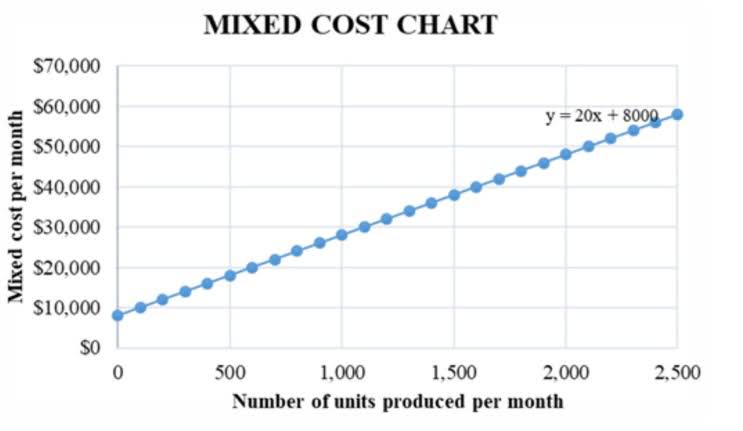
The term “float” refers to the number of shares available to be traded by the public and excludes any shares held by company executives or the company’s treasury. The weighted average shares outstanding figure smooths out this variance, by simply averaging the share count across the reporting period. This is a figure calculated by the company itself; investors literally do not have the access to the data required. If a company issues new shares to the public, exercises a stock split or the employees of the company redeem the stock options, the number of outstanding shares tends to increase. On the other hand, if a company buys back the shares or practices share consolidation, the number of outstanding shares decreases.
Weighted Average of Outstanding Shares
- Treasury stock is no longer outstanding — the company itself now owns it, not an investor or employee, but it has still been issued.
- The number of shares outstanding can impact how liquid a stock is, which in turn often affects the volatility of its price.
- The cost basis refers to the original purchase price of an asset or investment for tax purposes.
- The number of outstanding shares can also change if other financial instruments are turned into shares.
- Heavy trading by closely held shareholders could also affect the stock’s weighting impact in free float capitalization indexes.
Let us understand how to calculate outstanding shares with a simple example. A food distribution company, FoodZilla Ltd has issued a total of 10,000 equity shares. Of these, 6,000 shares are floating stock i.e. held with the general public. No, float—short for floating stock or floating shares—can’t be higher than shares outstanding. It’s always a smaller figure because it only counts the number of shares available for investment and trading on financial exchanges.

Factors Influencing Outstanding Shares
The earnings per share calculation for the year would then be calculated as earnings divided by the weighted average number of shares ($200,000/150,000), which is equal to $1.33 per share. Once you know how to calculate the outstanding shares, you can use this number to calculate a number of valuation metrics, or measures of a company’s performance and future earnings potential. Outstanding shares of stock is the kind of stock issued by the company that is owned by investors, rather than by corporations themselves.
Finding Basic Shares Outstanding in Financial Statements

For https://www.bookstime.com/ example, when shares outstanding are going up, the ownership stake of shareholders is diluted. And when shares are bought back, investors end up owning more of the company. Shares outstanding is a financial number that represents all the shares of a company’s stock that shareholders, including investors and employees, currently own. The most up-to-date number of basic shares outstanding can be found in the latest form 10-K or 10-Q of a company. The information is available on the front page of these financial reports. Different scenarios for calculating the weighted average of outstanding shares are shown in the following examples.
- For example, the difference between the number of shares currently outstanding and the number of shares fully diluted is comparatively likely to be significant for fast-growing technology companies.
- That stock should be included in the common stock outstanding figure.
- And if these instruments are in the money, they represent current ownership of the company, even if technically the shares underlying the options, warrants or debt haven’t yet been issued.
- That’s because the vast majority of its shares are available to the general investing public.
- The number of shares outstanding consists of shares held by institutions, restricted shares held by company insiders, and shares available for investors to buy and sell on the open market.
A reverse stock split exchanges existing shares for a proportionately smaller number of new shares. Companies may do this to increase their share price, such as if they need to satisfy exchange listing requirements or want to deter short sellers. A stock split occurs when a company increases the number of its outstanding shares without changing its overall market cap or value.

But the concept of outstanding shares is a bit more complicated than it seems. The number of shares outstanding changes over time, sometimes dramatically, which can impact the calculation for a reporting period. At any how to calculate shares outstanding given point, instruments like warrants and stock options must be accounted for as well. A company’s outstanding shares may change over time because of several reasons. These include changes that take place because of stock splits and reverse stock splits. There are also considerations to a company’s outstanding shares if they’re blue chips.
Reverse Stock Split
- If you’re looking at buying stock, you can find this information is available on financial statements and through stock exchange websites.
- Using weighted average shares outstanding gives a more accurate picture of the impact of per-share measurements like earnings per share (EPS).
- The profit and loss statements in nearly every corporate earnings press release will include both basic and diluted shares outstanding.
- In certain cases, notably for companies that are aggressively issuing shares or debt, public data should be augmented with a reading of SEC filings.
- The most up-to-date number of basic shares outstanding can be found in the latest form 10-K or 10-Q of a company.
These are instruments that give the holder a right to purchase more stock from the company’s treasury. Every time one of these instruments is activated, the float and shares outstanding increase while the number of treasury stocks decreases. If all these warrants are activated, then XYZ will have to sell 100 shares from its treasury to the warrant https://www.instagram.com/bookstime_inc holders. While shares outstanding account for company stock that includes restricted shares and blocks of institutional shares, floating stock specifically refers to shares that are available for trading. Floating stock is calculated by taking outstanding shares and subtracting restricted shares.
The weighted average number of outstanding shares in our example would be 150,000 shares. On the balance sheet, there is a line item description that states the number of shares outstanding. Although the two both relate to the number of shares a public company has issued, they are distinct from one another. Investors use this data to calculate financial ratios, assess ownership structures, and make informed investment decisions.
- Published in Bookkeeping
Software Solutions for Oil and Gas Upstream Producers

In case of any issues, you should be able to contact customer support and receive assistance in a timely manner. Look for software that has a dedicated customer support team that can provide assistance via phone, email, or chat. Oil and gas accounting software should use strong encryption methods to protect data both in transit and at rest. This helps prevent data theft and unauthorized access to sensitive financial information.

Full Financial Accounting

Petrofly is a reliable and efficient tool that can help companies stay on top of their finances. Powered Now is a mobile oil and gas accounting software that is designed for small businesses. It offers a range of features, including invoicing, expense tracking, and financial reporting. The software is easy to use and can be accessed from anywhere, making it a convenient solution for companies with remote employees.
- We firmly believe that delivering responsive support and top-notch products is paramount in effectively serving all our clients.
- Our unique business intelligence tool offers seamless, integrated reporting and analysis that includes ad hoc data discovery, report creation, dashboards, data visualization, and pixel-perfect reporting.
- When choosing oil and gas accounting software, it is essential to consider how well it integrates with existing systems.
- Nearly 20 years after its creation, the accounting software still focuses on helping business owners get paid quickly and accurately.
- This includes performing regular backups, updating the software, and monitoring for any issues.
Business intelligence and data visualization
Pay attention to both the positive and negative reviews to get a balanced picture of each software. To determine the best free accounting software, we looked at a variety of factors, including features, customer reviews and value. We whittled down our options after assigning weighted scores to each feature, and then we ranked the companies based on those factors. If your small business has less than five employees, you can use the free version of NCH for your accounting software.
Revenue Distribution
By following these implementation strategies, oil and gas companies can successfully implement accounting software and improve their accounting processes. It can also help identify areas where cost savings can be achieved, improving profitability. Paid plans start at $16 per month and include features, such as invoicing, receipts, payment tracking and double-entry bookkeeping. To help you find the best free accounting software for your needs, we’ve compiled a list of our top picks.
- Identifying and tracking information related to buyers can be greatly assisted with customer relationship management software.
- To determine the best free accounting software, we looked at a variety of factors, including features, customer reviews and value.
- Pricing went through the roof, forced to migrate to the Cloud when they weren’t ready and customer service has degraded to a new low.
- VAIL-PLANT is a cost-effective solution that can help companies manage their finances efficiently.
- Information stored in cloud-based accounting software is encrypted meaning it is extremely difficult for cybercriminals to hack into it.
Effortlessly handle JIBs and Royalties while tracking the compliance of royalty owners and partners. Before choosing a software solution, it’s essential to assess your company’s specific accounting needs. For example, do you need software that can handle joint ventures, or are you looking for a system that focuses on automating accounts payable and receivable? Understanding your needs will help you choose the best software for your business. While you could manage operations with a complete ERP system, there are many benefits to using an industry-specific solution.
- Tap into expertise, services and technical support that can help you achieve results faster and get the most of your software investment.
- Petrofly allows oil and gas operators to manage, understand, and generate joint interest billing and royalty payments on the fly.
- The software integrates with geology, seismic, simulation, and modeling software to design the best approaches for resource extraction and production.
- Accounting software is a great way to manage your finances if you’re a small business owner, freelancer or contract worker.
- There are four basic areas you should consider when choosing a cloud accounting software solution.
- The accounting software you choose should be able to integrate with your existing systems, such as production, inventory management, and payroll systems.
- Whatever the case may be, a production planning module will help you understand how much demand you have and how much material you are processing to keep up with customer demand.
- Overall, when choosing an oil and gas accounting software, it’s crucial to consider the level of customer support and training provided by the vendor.
- Some software providers offer a monthly subscription fee, while others offer an annual subscription fee.
- The platform enables seamless integration with other systems, including accounting systems, to provide a comprehensive view of the business operations.
- Automatically compute and allocate revenue and expense distributions as purchase statements and invoices are recorded into the system.
Automating accounts receivable also allows companies to manage their cash flow more effectively, ensuring that payments from vendors and partners are processed efficiently. This software covers the entire spectrum of businesses within the oil and gas industry, from the earliest oilfield discovery all the way to end-consumer retail sales. Oil and gas software is commonly used by production, pipeline, and plant operators, as well as equipment manufacturers, inspection services, and oilfield services.
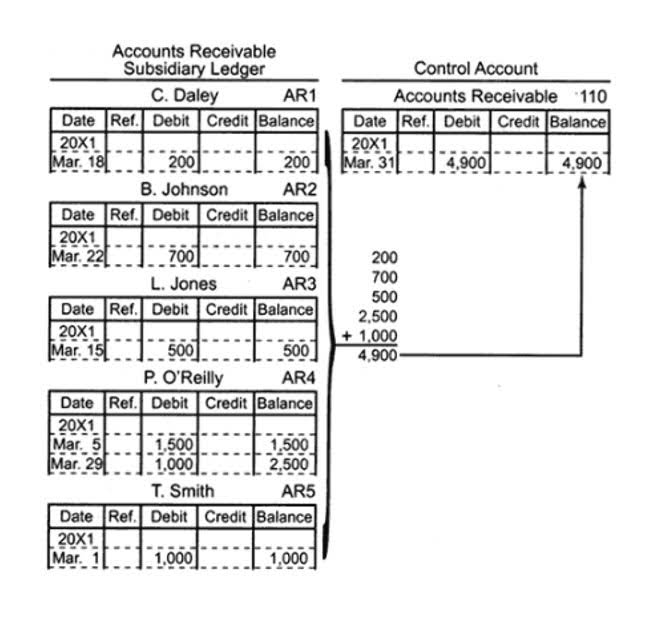
Top 5 Best Call Center Software for Small Business in Canada 2024
We reviewed the most popular oil and gas software on the market and selected our favorites for different types of companies. Simulation and modeling software ascertains the extent and viability of deposits, extraction, and production efforts. These models depict the resource reservoirs, potential equipment utilization, and environmental impacts. These tools contribute to informed decision-making, risk assessment, and safety measures. Regular maintenance is necessary to ensure that the software continues to function properly. This includes performing regular backups, updating the software, and monitoring for any issues.
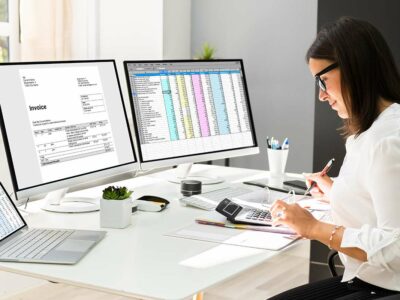
Experience W Energy Right Now
Reduce time spent processing royalties and revenues, eliminate mistakes and repetitive paperwork, drive workflow productivity, and ensure your interest owners are paid on time on an intuitive platform. Manage your interest partners and division orders efficiently and effectively. Besides the standard accounting reports such as income statements, balance sheets, etc., Petrofly offers customizable reporting. Petrofly will verify and double-check fields such as invoice date, invoice number, vendor, customer, etc. to prevent fraudulent entries into the system. In addition to tracking entries into your accounts, Petrofly also tracks the user who created, changed, or approved entries in the system. Expedite decision-making with cutting-edge notification and communication processes.
What are the leading accounting software solutions for oil and gas production allocation?
Invoicing and payments can be complex in the oil and gas sector, particularly when dealing with multiple stakeholders and partners. Oil and gas accounting software can automate the invoicing process, ensuring that payments are made on time and that cash flow is managed efficiently. Automated invoicing also reduces the risk of errors, ensuring that all financial transactions are accurately recorded. The oil and gas accounting should offer automation features that allow companies to automate routine accounting tasks, such as invoicing, expense tracking, and revenue allocation. W Energy’s midstream accounting solutions offer advanced gas processing allocation and contract management.
- Published in Bookkeeping
Bookkeeping Basics Certificate Red Deer Polytechnic
Running a small business comes with many responsibilities—and keeping accurate financial records is one of them. Bookkeeping might seem intimidating at first, but it’s essential for your business’s success. It helps you track your income and expenses, keep an eye on your financial health, and make informed decisions. Small businesses also manage their own accounts receivable to make sure they get paid on time for goods and services that have already been bought or rendered. The process involves sending estimates and invoices and keeping track of due dates.
- You can expect most bookkeepers to maintain the general ledger and accounts while the accountant is there to create and interpret more complex financial statements.
- Bookkeeping is an accounting process of recording and maintaining accurate records of your company’s financial transactions.
- However, as a business grows and the transactions multiply or become more complex and have greater tax implications, it may be necessary to seek professional help.
- Bookkeepers record a business’s financial transactions, manage the accounts, and maintain the established accounting systems.
Bookkeeping 101: What is it? Is it Important? How to Get Started
It can be produced for one period to gain insight into the month’s profitability, or produced for the year to period. And sometimes it can be produced to include comparisons against the prior year’s same period or the prior year’s year-to-period data. For https://inspirationallovequotesimages.com/2019/03/top-150-happy-valentines-day-wishes.html both sales and purchases, it’s vital to have detailed, complete records of all transactions. You’ll need to note the amount, the date, and any other important details to ensure you can accurately summarize your finances when it comes time for tax season.
Who should manage small-business bookkeeping tasks?
Never leave the practice of bookkeeping (or your business assets) to chance. No matter what system you implement, incorporate a practice of reconciliations, by comparing the numbers in your system to the source records, like bank statements, receipts, and invoices. This habit improves communication, boosts transparency with your bookkeeping team, and promotes longevity and compliance. The income statement is a holistic report that shows revenue and expenses over a set period of time.
The Accounting Cycle (Part
Reconciling your transactions is the practice of determining any difference between the balance shown on the bank statement and in your bookkeeping system. Financial statements should be regularly prepared and used for decision-making. In this final module for Course 1, you will gain an understanding of key accounting assumptions and principles and learn about the different types of accounting methods bookkeepers use. Steer clear of common mistakes like not keeping receipts, miscategorizing expenses, and mixing personal finances with business ones.
Bookkeeping Basics for Small Business Owners: Everything You Need to Start Doing Your Own Bookkeeping
In addition, consider the tax implications and other business-related expenses to be deducted from earnings. Once you’ve completed your analysis, it is a good practice to pay all of your expenses first (by check or card, not cash) before determining http://prognoz.org/article/prognozy-2007-neft-rynok-rubl profit. Using the data you gain from keeping a ledger, your next step will be to generate and prepare financial reports for analysis. The major reports to include are the profit and loss, the balance sheet, and a cash flow analysis.
But regardless of the type or size of business you own, the accounts we list below are the most popular. Alternatively, in-house or outsourced bookkeepers can update your books for you, typically for a monthly fee. But whether you plan to do bookkeeping yourself or outsource it to an accountant, it pays to understand the basics of bookkeeping. At tax https://www.india.ru/boards/showflat.php?Cat=0&Board=common&Number=124991&page=41&view=expanded&sb=1&part=all&vc=1 time, the burden is on you to show the validity of all of your expenses, so keeping supporting documents for your financial data like receipts and records is crucial. Most accounting software today is based on double-entry accounting, and if you ever hire a bookkeeper or accountant to help you with your books, double-entry is what they’ll use.
What is the simplest bookkeeping software?
The best accounting software automates a lot of the process in journal entries for regular debits and credits to help eliminate possible errors in data entry. While the basics of accounting haven’t changed in over 500 years, the practice of bookkeeping has. Bookkeeping was once done manually using actual books called journals and ledgers. Because bookkeeping is based on double-entry accounting, each transaction affects two accounts — one gets debited and the other is credited. Bookkeeping involves the day-to-day recording of financial transactions, which includes documenting sales, expenses, payments, and receipts.
- Published in Bookkeeping
The cash over and short account
This information is then used to track down why cash levels vary from expectations, and to eliminate these situations through the use of better procedures, controls, and employee training. The culmination of diligent cash management practices is often reflected in the audit process. When auditors assess a company’s financial records, cash over and short http://prosto-site.ru/interesnaya-informacziya/kak-ustroen-igrovoj-avtomat-v-onlajn-kazino/ instances must be transparently reported. This transparency is not merely a matter of regulatory compliance but also a testament to the company’s commitment to financial accuracy. Auditors examine these reports to understand the frequency and magnitude of discrepancies, which can serve as indicators of the effectiveness of current internal controls.
National bail fund exits Georgia over new law that expands cash bail and limits groups that help
In this case, the cash needed to get back to $100 ($100 fund – $7.40 petty cash on hand) of $92.60 equals the total of the petty cash vouchers. One of the conveniences of the petty cash fund is that payments from the fund require no journal entries at the time of payment. Thus, using a petty cash fund avoids the need for making many entries for small amounts. Only when the fund is reimbursed, or when the end of the accounting period arrives, does the firm make an entry in the journal. To record the cash shortfall the business needs to enter the cash shortage of 12 as part of the journal entry used to record the sales as follows. Cash shortages are recorded in a separate income statement expense account usually known as the cash short or over account.
- When a business experiences repeated “cash over” or “cash short” situations, it may be indicative of a larger problem such as theft.
- If you have to pay added fees and buy add-ons, the cost of your loan will be higher.
- Julia is responsible for administering the petty cash fund for her employer, Deia’s Drafting Company.
- Faisal has authored over 1,500 stock specific articles with focus on the technology, energy and commodities sector.
- His more moderate positions have helped boost the government’s international credibility.
- Mr. Netanyahu has also faced international criticism as the destruction and civilian casualties have mounted in Gaza.
Understanding Cash Shortage & Overage in the Income Statement
She’s not sure how this could have happened and what the next steps are. Ongoing education is equally important as it helps to reinforce best practices and keep staff updated on any changes in procedures or technology. By fostering a culture of continuous improvement and accountability, businesses can minimize the likelihood of cash handling errors. Moreover, employees who are well-trained and confident in their roles are less likely to make mistakes, contributing to a more secure and efficient cash management system.
Best Money Market Account With a Debit Card
There are some tax implications, since any gains you realize from selling investments are taxable. But if you’re market-savvy, you could potentially make money very quickly from trading through a platform like Robinhood. Robinhood is perfect for those looking to delve into stock trades, exchange-traded funds (ETFs), and crypto trading – all on one platform. The Gold tier subscription offers a very competitive 5.00% APY on your uninvested brokerage cash (it’s 1.50% without Gold). Yes, so long as they are at a financial institution insured either by the FDIC or the NCUA. All of the banks on our list are FDIC insured up to $250,000 per depositor, for each account ownership category, in the event of a bank failure.
The counterparty agrees to buy back the collateral at a specified time and price, implying a rate of interest for the money market fund. Each of our mutual funds has an expense ratio—a built-in cost for running the fund. The annual expense ratios for our money market funds range from 0.09%–0.16%, or $9–$16 for every $10,000 invested. At the end of the month, assume the https://www.vividweddingpics.com/austin-museum-of-art.html $100 petty cash fund has a balance of $6.25 in actual cash (a five-dollar bill, a one-dollar bill, and a quarter). Frank, who is the responsible person, has been filling out the voucher during the month, and all the receipts are stapled to the voucher. After the check is cashed, the petty cash custodian normally places the money in a small box that can be locked.
- And as is the case with many credit unions, you won’t have to worry about monthly fees.
- Alternatively, if there had been too much cash in the petty cash box (a rare condition indeed!), the entry would be reversed, with a debit to cash and a credit to the cash over and short account.
- Generally, the amounts in the account Cash Short and Over are so small that the account balance will be included with other insignificant amounts reported on the income statement as Other Expenses.
- For the same period, CrowdStrike generated operating cash flow of $383 million and ended the quarter with a cash buffer of $3.7 billion.
The company recently announced plans to continue this trend with an additional $200 million repurchase round, signaling ongoing confidence in its financial strategy and future growth prospects. In contrast, if we give too little change of cash to customers that http://www.oslik.info/search-word-silence.html means it is a gain for us. Julia is responsible for administering the petty cash fund for her employer, Deia’s Drafting Company. When she reconciled the petty cash at the end of the month, Julia noted that she had $8 less in her fund than she should have.
The deal is worth $1.2 billion but may climb to $1.5 billion if performance criteria are met, further increasing the cash-cow stock’s treasure chest. To that end, Zoom is broadening its services to become a comprehensive solution for remote workers. Initially focused solely on video conferencing, Zoom is now developing a more integrated ecosystem. This evolution simplifies the user experience by eliminating the need for multiple applications, which reduces friction for remote workers and employers alike. Additionally, this approach enhances customer retention, as both large corporations and small businesses increasingly rely on Zoom as their primary provider for remote communication solutions. If you want to create a custom basket of cash-cow stocks, though, starting with these seven companies creates a well-rounded, financially robust cash-cow portfolio of your own.
Over-Hyped Stocks to Sell Before They Plunge: June Edition
If you’d like to invest for retirement, you might consider a robo-advisor instead. Platforms like SoFi Invest make it easy to set up an Individual Retirement Account, schedule recurring deposits, and build a portfolio on autopilot. You can choose between automated or self-directed trading to generate passive income from investments. Particularly for no-annual-fee credit card, this is an above-average return for dining, whether you eat at the restaurant or order delivery. You’ll get a free year of DashPass, special perks and cash back in DoorDash credits if you opt to pick up, in addition to a solid return for your spending.
- Published in Bookkeeping
Carlsbad, CA CPA Firm Home Page

I would highly recommended and very reasonable rates! I completed my return with Sean and highly recommend him. He know tax laws very well and completed my return and found errors from a return I prepared via Turbo Tax. We’re here to answer and give you the support you need during tax season and throughout the year. Read more for our tax prep checklist and information on where to find your refund. Click on any of the report categories listed below to find practical, unbiased information to help you reach your financial goals.
Candice Gerlach, Certified Public Accountant, CFE

It’s about making your life easier so you can focus on the things that matter most. All the while, we’ll make sure you know exactly what’s fixed assets going on. At Candice Gerlach, CPA that’s what professionalism means to us.

Providing high quality tax and accounting services as one of Southern California’s leading public accounting firms,
It doesn’t matter if you’re just needing help with your own personal taxes, filing tax returns for your whole family, or filing for your Airbnb Accounting and Bookkeeping business. Conveniently located in beautiful Carlsbad CA 92010, we’re here to help regular folks and business owners alike. If you are looking for a blend of personal service and expertise, you have come to the right place! We offer a broad range of services for business owners, executives and independent professionals. Please call us for a free initial consultation. Sean Currey has been providing high-quality individual and business tax return preparation and value-added bookkeeping services to Carlsbad and nearby cities for over 12 years.
Tax Preparation – Tax Planning – Bookkeeping
We have built a tax preparation business on taking care of our clients and will be happy to walk you through the sometimes complicated world of tax preparation. Our company has been providing quality, personalized financial guidance to local individuals and businesses. Our expertise ranges from family/personal CFO service, tax management and accounting services to more in-depth services such as estate planning and financial planning. Alexx Chesney, EA is a well-reviewed Enrolled Agent in Carlsbad, California who is proud to offer tax preparation and bookkeeping services to the residents of the surrounding communities.
- We take a proactive approach to this process and will stay in contact with you throughout the year.
- You also get the latest breaking tax saving strategies in our monthly newsletter.
- We have experience working with businesses of all shapes and sizes and will work with you to ensure that you can be as hands-off or hands-on as you want with your business accounting.
- As your accounting team, we make sure someone is here to help you and answer your questions during normal business hours, year-round.
Every client receives personal attention and professional guidance structured to support their particular needs and goals. Speaking of taxes, the third, and most popular reason to hire an accountant is, of course, to simplify the tax return process. We take a proactive approach to this process and will stay in contact with you throughout the year. This keeps things from feeling overwhelming or stressful, by keeping records up to date. You’ll also save time by handling things as they come, rather than waiting until the last minute and frantically looking for that document you need.
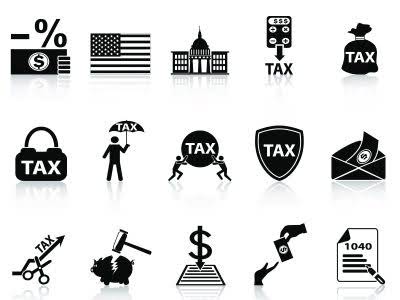
Tax Services
Alexx is an authorized e-file provider and can help clients file their taxes online quickly and painlessly. Alexx has more than 17 years of experience in the tax industry, and she is happy to help individuals and businesses alike. She enjoys seeing clients pleased when she resolves their issues with the current year’s taxes, files unfiled taxes from years past, and resolves more complex issues they simply didn’t understand. Alexx prides herself on saving clients time and money while removing stress and fear. As part of our tax preparation service, we are qualified to calculate, file and sign income tax returns on behalf of individuals and businesses.
Services for Individuals
Choose a CPA team that cares about your financial success, so you can spend less time worrying about the big picture and more time smiling for the camera. We are here to help you meet and understand your financial goals so that you can Bookkeeping Services in Carlsbad feel secure with your financial plan. Have a question regarding our bookkeeping services? Send us a message and we’ll get in touch shortly, or phone between 9 am and 6 pm Monday to Friday.
People
We find the strategy that will best suit our client’s situation. KB Tax is the home of Kevin Bishop, a Certified Public Accountant and former IRS agent. Because of Kevin’s experience in the IRS headed the medical profession industry audit, he believes he is specially qualified to offer clients the most efficient tax services.
Serving Customers Throughout San Diego CountyGet in touch with us today!
JL Wennes CPAs will guide you through the maze of forms that are required to be filed for you to maintain your tax exempt status. We will prepare your annual filing with the Internal Revenue Service and submit the proper documents to the State.
- Published in Bookkeeping
Bookkeeping Skills Test Quiz, Trivia & Questions
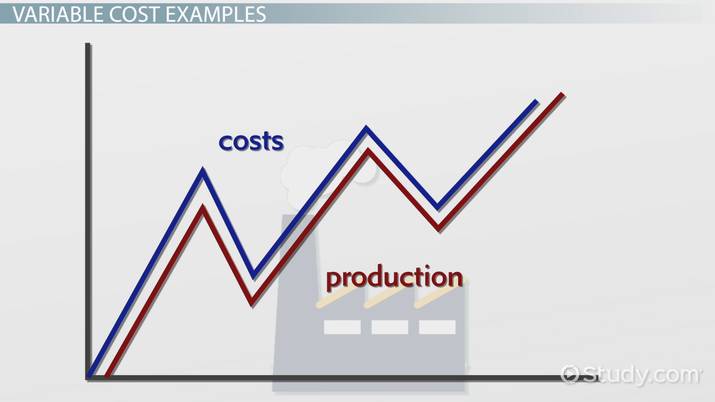
As mentioned at the top, if you have any bookkeeping questions you would like an answer to, simply send it to us using the contact form. This may require you totake more bookkeeping and accounting courses, perhaps at your local college, becausethis will help you grow in knowledge.. Our quizzes are rigorously reviewed, monitored and continuously updated by our expert board to maintain accuracy, relevance, and timeliness. Read up on accounting source documents to be able to answer the questions. The first page has the questions, and the second page has the answers.
For multiple-choice and true/false questions, simply press or click on what you think is thecorrect answer.For fill-in-the-blank questions, press or click on the blank space provided.
Accounting Quizzes from Double Entry Bookkeeping
- This may require you totake more bookkeeping and accounting courses, perhaps at your local college, becausethis will help you grow in knowledge..
- For the past 52 years, Harold Averkamp (CPA, MBA) hasworked as an accounting supervisor, manager, consultant, university instructor, and innovator in teaching accounting online.
- This is the best place for small business owners or business bookkeepers to ask your bookkeeping questions and receive relevant answers.
- Note that there is no time limit to answer the questions, and you can have as many goes at answering each question as you like.
He has worked as an accountant and consultant for more than 25 years and has built financial models for all types of industries. He has been the CFO or controller of both small and medium sized companies and has run small businesses of his own. He has been a manager and an auditor with Deloitte, a big 4 accountancy firm, and holds a degree from Loughborough University. If you have difficulty answering the following questions, learn more about this topic byreading our Bookkeeping (Explanation). If you need a refresher course on this topic you can view our basics of bookkeeping tutorials here.
Depreciation Quizzes

Double Entry Bookkeeping is here to provide you with free online information to help you learn and understand bookkeeping and introductory accounting. Why not try one of our accounting quizzes and test your knowledge of bookkeeping and accounting. If you wish to take an accounting quiz please do so by first choosing a quiz from the Popular Quiz list below. Note that there is no time limit to answer the questions, and you can have as many goes at answering each question as you like.
bookkeeping Questions and answers
You will find it helpful to read up on each topic by what is par value of a bond clicking on the graphic links to the relevant pages of our website. These tests are made up of about 9, 10 or more quiz-type questions. Receive instant access to our entire collection of premium materials, including our 1,800+ test questions.
For the past 52 years, Harold Averkamp (CPA, MBA) hasworked as an accounting supervisor, manager, consultant, university instructor, and innovator in teaching accounting online. He is the sole author of all the materials on AccountingCoach.com. For the past 52 years, Harold Averkamp (CPA, MBA) managerial accounting ch. 3 quiz flashcards has worked as an accounting supervisor, manager, consultant, university instructor, and innovator in teaching accounting online.
Bookkeeping (Practice Quiz)
The basics of bookkeeping quiz is one of many of our online quizzes which can be used to test your knowledge of double entry bookkeeping, discover another at the links below. The bookkeeping basics quiz is one of many of our online quizzes which can be used to test your knowledge of double entry bookkeeping, discover another at the links below. Test your knowledge of bookkeeping with our online bookkeeping basics quiz. If you need a refresher course on this topic you can view our bookkeeping basics tutorials here.
This is the best place for small business owners or business bookkeepers to ask your bookkeeping questions and receive relevant answers. Alternatively, print off the pdf version of the accounting quiz of your choice below. Chartered accountant Michael Brown is the founder and CEO of Double income tax calculator Entry Bookkeeping.
- Published in Bookkeeping
Bank Account Deposits Definition, How It Works, and Types
These policies are subject to federal regulations, which set maximum time limits for fund availability. Banks often have a tiered policy where larger deposits may be subject to longer hold times to mitigate potential risks. In the case of depositing money into a bank account, you can withdraw the money at any time, transfer it to another person’s account, or use it to make purchases. Despite their inherent benefits, there can be challenges, including processing delays or errors like bounced checks. These can be mitigated by understanding bank policies, anticipating potential hold periods, and maintaining open communication with the bank.
This doesn’t matter if it is a check or cash, a bank is legally required to report this to the IRS. Ariel Courage is an experienced editor, what is a perpetual inventory system researcher, and former fact-checker. She has performed editing and fact-checking work for several leading finance publications, including The Motley Fool and Passport to Wall Street.
For online transfers, you can move money from one account to another electronically. Deposits, which can be made via cash, checks, or electronic transfers, differ in their processing time and fund availability. For instance, cash deposits are usually instantly accessible, while checks and transfers may require time to clear. A bank account deposit is the act of placing money into a bank account, either in a checking or savings format, for safekeeping and potential interest earnings. The Nigerian Deposit Insurance Corporation, a federal insurance agency, protects depositors and guarantees the settlement of insured funds when a financial institution can no longer repay their deposits. A deposit is essentially your money that you transfer to another party, such as when you move funds into a checking account at a bank or credit union.
Often, you must deposit a certain amount of money, called the “minimum deposit,” to open a new bank account. Depositing money into a checking account qualifies as a transaction deposit, which means that the funds are immediately available and liquid, and you can withdraw them without delays. A depository also can be an organization, bank, or institution that holds securities and assists in the trading of securities.
Does Every Deposit Made to a Bank Earn Interest?
They use money deposited for safekeeping to lend to others, they invest in other securities, and they provide a funds transfer system. A person in a trade or a business can deposit only up to $10,000 in a single transaction or multiple transactions without any issue. Some businesses may allow employees to deposit funds into their accounts using a warm card. By comparing interest rates across banks, implementing robust security measures, and understanding how your bank calculates interest, you can maximize the benefits of your deposits.
What Are Bank Deposits?
According to affected depositors, the total funds frozen could amount to tens of billions of yuan from tens of thousands of citizens. A depository is not the same thing as a repository, although they can often be confused. We need just a bit more info from you to direct your question to the right person. Ask a question about your financial situation providing as much detail as possible. Our mission is to empower readers with the most factual and reliable financial information possible to help them make informed decisions for their individual needs.
What Are the Benefits of a Depository Institution?
As society continues to digitalize, electronic transfers are becoming an increasingly common mode of deposit due to their convenience and speed. Though somewhat old-fashioned, checks remain a common form of payment, especially for large amounts or formal transactions. They provide a safe storage for funds, simplify financial management, and allow for the accumulation of money for future needs. No depositor lost a single penny in insured deposits, despite the worst banking crisis since the early 1930s. But unlike a depository, the items kept in a repository are generally abstract such as knowledge. For instance, data can be kept in a software repository or a central location where files are housed.
- Financial institutions refer to these accounts as interest-bearing checking accounts, Checking Plus, or Advantage Accounts.
- To maximize your earnings, it’s worth comparing interest rates across different banks.
- They provide a safe storage for funds, simplify financial management, and allow for the accumulation of money for future needs.
- While this method is simple and direct, it may not always be convenient or safe to handle large amounts of cash.
Euroclear settles domestic and international securities transactions, covering bonds, equities, derivatives, and investment funds. Domestic securities from more than 40 markets are accepted in the system, covering a broad range of internationally traded fixed- and floating-rate debt instruments, convertibles, warrants, and equities. Someone on our team will connect you with a financial professional in our network holding the correct designation and expertise. Our writing and editorial staff are a team of experts holding advanced financial designations and have written for most major financial media publications. Our work has been directly cited by organizations including Entrepreneur, Business Insider, Investopedia, Forbes, CNBC, and many others. To maximize your earnings, it’s worth comparing interest rates across different banks.
Investopedia is also considered a repository—in this case, it’s a repository for financial information. Another function of a depository is the elimination of the risk of holding the securities in physical form. These risks can include theft, loss, fraud, damage, or denver tax software, inc delay in deliveries.
Commercial banks are for-profit companies and are the largest type of depository institutions. These banks offer a range of services to consumers and businesses such as savings accounts, consumer and commercial loans, credit cards, and investment products. These institutions accept deposits and primarily use the deposits to offer mortgage loans, commercial loans, and real estate loans. Bank deposits consist of money placed into banking institutions for safekeeping. These deposits are made to deposit accounts such as savings accounts, checking accounts, and money market accounts at financial institutions. The account holder has the right to withdraw deposited funds, as set forth in the terms and conditions governing the account agreement.
They allow for deposits and withdrawals as with personal accounts but often have different limits. Banks that offer business accounts frequently have night depositories, which are secured lock boxes that allow users to deposit cash and checks when the bank is closed. Financial institutions refer to these accounts as interest-bearing checking accounts, Checking Plus, or Advantage Accounts. These accounts combine the features of checking and savings accounts, allowing consumers to easily access their money but also earn interest on their deposits. Many checking accounts do not provide interest, while most savings accounts and certificates of deposit (CDs) do.
Each depositor thus retains title to some portion of the grain in the elevator. The Central Bank continues to try to soothe investors and depositors’ worries.
- Published in Bookkeeping
A Comprehensive Guide to Franchise Accounting

Keeping accurate financial records will help ensure that the franchisor can trust the franchisee to manage their finances properly and make sound decisions. The importance of using a qualified franchise accountant cannot be overstated when it comes to franchise accounting. Padgett Business Services consistently helps hundreds of up-and-coming entrepreneurs to make their dreams of running their own business come true and help small business owners with their taxes.
- Then you must know the significance of franchise accounting for the overall success of your venture.
- Compliance with tax laws and regulations is essential to avoid penalties and fines.
- It offers a unique opportunity to enter the market with a recognized name and a loyal customer base, increasing the chances of success in the competitive business landscape.
- Franchises need to clearly report revenue from contracts with customers, which includes income generated from the sale of goods or services.
Unlike starting a business from scratch, a franchise offers a proven blueprint for success. Franchisees can get started with accounting on their own, but hiring a professional accountant is often a good idea. Doing so can help franchise owners avoid mistakes, get their business started right, stay aware of risks, and save time so they can focus on other aspects of their business. Implementing internal controls is essential to prevent fraud and ensure compliance with tax laws and regulations. This involves setting up procedures to monitor financial transactions, including authorization, segregation of duties, and regular audits. Effective internal controls will help minimize the risk of financial loss and provide assurance to franchise owners and stakeholders.
Routine Financial Reporting:
They understand the importance of regularly reviewing the debt structure to identify more affordable alternatives. By doing so, franchise accountants help public accounting vs private accounting franchisees optimize their business performance. Franchise agreements often require franchisees to contribute to marketing funds. Accounting processes should be established to track and manage these fees, ensuring their proper allocation and appropriate use to promote the brand and support marketing initiatives. A franchise is a business model in which an individual, known as the franchisee, purchases the rights to operate a business using the established brand, systems, and support of the franchisor.
Introduction to Franchise Accounting
Using online accounting can help franchise owners and franchisors communicate about the business’s finances. They can access the software program from anywhere with an Internet connection so that both parties have instant access to financial records. Even if you decide to outsource your books to an accountant, payroll software for accountants could drastically decrease the financial burden on your overhead. As a result, it’s important that franchisees maintain good accounting standards and that any discrepancies are reported in a timely manner.

If you already have an accounting background, you probably won’t need to hire an accountant. However, if you’re running a franchise, you’ll likely want to work with one so that you can focus on other aspects of your business. By using a tax pro, like a franchise, individuals can have a buffer between them and the IRS. North One is proudly made for small businesses, startups, and freelancers.
Identify your franchise accounting needs
Because of this, tax preparers offer online services that fill out and file tax forms electronically, allowing tax payers to compute their own taxes at home. 37% of tax businesses are run by a single person, and 53% employ fewer than ten people. Both of these approaches to making a business investment are suitable for those who don’t have their own unique product or service to bring to the marketplace, but still want to run a business. The greatest distinguishing factor between the two is how much support you desire. According to Accounting Today, taxpayers—even with all of the options for self-serve tax preparation—still prefer an independent tax preparer’s opinion on their individual situations. I have multiple companies that xendoo handles the bookkeeping for and I wouldn’t have it any other way.
It also provides transparency to investors and other stakeholders, which is essential for building trust and credibility. A statement of owner’s equity shows changes in the equity or ownership of business invoicing software the franchise business over a period. It helps to track the franchise’s financial performance and is important when seeking additional funding for the business.
On demand financial insights
By maintaining proper accounting practices, you can ensure transparency, build trust with the franchisor, and set yourself up for a successful and profitable venture in your franchise location. Maintaining accurate records is the foundation of 4 6 cash and share dividends accounting business and society proper franchise accounting. You can use accounting software to automate bookkeeping and financial management processes.
- Published in Bookkeeping
Online Bookkeeping Services for Small Businesses Bench Accounting

Argus has a “buy” rating and $315 price target for ANET stock, which closed at $296.57 on June 6. Microsoft has invested $13 billion into OpenAI and has integrated ChatGPT into its Bing search engine. Microsoft has also integrated all its AI copilots into a single AI experience called Microsoft Copilot.
Remote Bookkeeping Jobs: Summary
They ensure that business financial records are up-to-date and accurate, and this helps companies make financial decisions and focus on growing their business and focus on growing their business. Therefore, there are often opportunities opening up for in-house bookkeepers, remote bookkeepers, or freelance bookkeepers. Bookkeeping is a great place to start if you’re hoping for a way to break into the finance industry. There are many bookkeeping job opportunities and generally fewer education requirements than in other finance and accounting positions.
Which Online Bookkeeping Service is Right for You?
Mandates to make such disclosures would “be even better, as it would shine the light on companies with high emissions that are reluctant to provide these data voluntarily,” he added. California has also enacted climate-related reporting requirements for companies doing business in California with total annual revenues in excess of $500 million but it will not take effect until January 2025. bookkeeping For example, the bookkeeping program through Intuit Academy entails about 40 hours of content and 1 hour of exam to complete. That said, it is a self-paced course, so you can go as fast or slow as you’d like. The group, which includes nine current and former OpenAI employees, has rallied in recent days around shared concerns that the company has not done enough to prevent its A.I.
Why Bookkeeping Is Important for Small Businesses
The hours are a bit flexible, but 1-800Accountant requires at least 30 hours a week (with more hours required during tax season). PCMag.com is a leading authority on technology, delivering lab-based, independent reviews of the latest products and services. Our expert industry analysis and practical solutions help you make better buying decisions and get more from technology.
- Most notably, its cheapest plan doesn’t include double-entry bookkeeping or free accountant access.
- We recommend Bench for businesses that are behind on their bookkeeping because Bench will not only help in updating the books but also provide tax filing assistance for back taxes.
- On the board, you can find work for any experience level, from entry-level to professional CPA or CFA.
- If you identify an error or discrepancy in your financial statements, take the time to revise your accounting procedures.
Specializing in a career field can help to set you apart and lead to career stability and longevity. You may also be expected to take on more advisory and analytical roles as bookkeeping becomes more automated. Integrity and trustworthiness are important qualities to cultivate as a bookkeeper. Keep an organization’s financial data confidential and be transparent about your bookkeeping activities. Small businesses may prefer to handle their books themselves, but hiring a professional bookkeeper can be helpful. In researching bookkeeping or bookkeeping accounting, you may come across information on accounting or find that bookkeeping and accounting are used interchangeably.
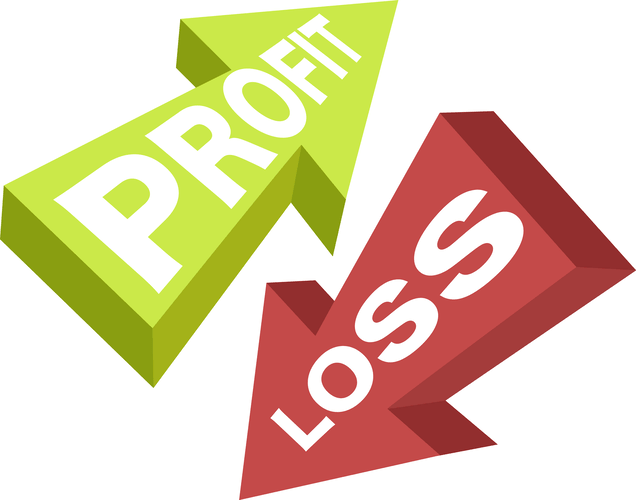
Best Online Bookkeeping Services for Startups 2024
An advisory board of educators and other subject matter experts reviews and verifies our content to bring you trustworthy, up-to-date information. We also discuss why you should consider earning a bookkeeping certificate and how to find an online program that can help you meet your goals. Flex Professionals offers a range of job types, from HR to marketing to bookkeeping. Much of their focus is on finding part-time work for professionals in these areas, but full-time opportunities are also available. Accountingfly is a staffing agency specifically for accounting and bookkeeping work — mostly remote roles, but some may involve being in an office part-time or full-time. The firm has offices in Oakland, Los Angeles and New York City, but bookkeeper jobs are remote.
How Trump vs. Biden Could Lower Your Banking Fees
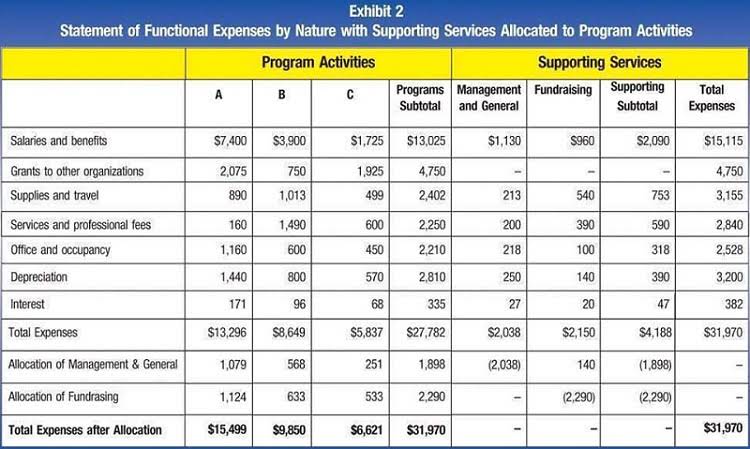
You can find services for as little as $20 per month while others run thousands per month. Not all bookkeepers offer tax preparation and/or filing services, so 1-800Accountant stands out with its additional tax services. The company not only helps you prepare for tax season but also offers ongoing tax advice throughout the year. Xendoo offers a variety of financial services for startups and small businesses, including bookkeeping, tax preparation, and fractional CFO services. Accurate and timely bookkeeping is essential for startup financial wellness. Jason Ding is a seasoned accountant with over 15 years of progressive experience in senior finance and accounting across multiple industries.
Rachel Cruze: 4 Steps To Overcome Financial FOMO
ASML is the only major producer of the extreme ultraviolet (EUV) lithography equipment necessary to produce advanced AI chips. ASML CFO Roger Daasen recently predicted a rebound in sales driven in part by the opening of new U.S. chip manufacturing facilities subsidized by the CHIPS Act. Kelleher says demand for generative AI applications and premium-tier edge devices will help ASML sales accelerate in 2025. Argus has a “buy” rating and $1,000 price target for ASML stock, which closed at $1,052.61 on June 6. Taiwan Semiconductor Manufacturing is the world’s largest pure-play semiconductor foundry.
- Your job as a bookkeeper entails systematically keeping track of an organization’s financial transactions.
- Income statement accounts are known as temporary accounts because the account balances adjust to zero at the end of each month and year.
- IgniteSpot offers bookkeeping services that include bill payment and invoicing, plus accounting and CFO services at an additional cost.
- You’ll also have to pay for a QuickBooks Online subscription on top of that.
- Once candidates are hired as employees, they will be provided with training assignments and other resources that prepare them for their positions.
- Some bookkeeping services can provide a full suite of bookkeeping, accounting and tax services.
- Get in touch with one of our specialists today to get your quote or click here to get started.
- Published in Bookkeeping
Audit Risk Model What Is It, Formula, Examples, Components

Audits for Legal E-Billing generative AI or large language models involve additional considerations. These audits require assessing potential intellectual property rights concerns, managing hallucinations, making disclosures about AI-generated content, and ensuring data privacy and security. Disclosure management software streamlines the key finance process and reduces errors immediately. What models and simulations should not be used for, however, is to replace business acumen and common sense. Modeling and simulation by their nature look primarily at “known unknowns” and present results in terms of the probability of an outcome occurring—there is always some uncertainty.
- The audit risk model brings out the mathematics behind an auditor’s discretion of your security controls and the confidence they have in your cybersecurity posture.
- The audit risk model is a function of RMM (which is made up of IR and CR) and detection risk (DR).
- The following is one of the best audit materials that could help you better understand audits in more depth and detail.
- Likewise, the auditor needs to reduce audit risk to acceptable low to make sure that they do not fail to detect any material misstatement that happens to the financial statements.
- Inherent risk is perhaps the hardest component of the audit risk model to mitigate.
- Let’s assume you already have a better understanding of audit risks and let’s check the above if you are still not sure.
How to audit AI systems for transparency and compliance

When we look at the results of an audit, we assume that the content in it is correct, but there is no way to guarantee that fact. It will take a lot of time to go through all the research that was done by the auditors to verify everything. Many businesses have suffered losses because there were audits that failed to discover the problems and risks present within the organization. Accounting for audit risks enables businesses to ensure that they are prepared for such an Certified Public Accountant eventuality. In conclusion, as we traverse this complex business environment, it is imperative to continuously re-evaluate and refine our audit processes. The path to corporate excellence is paved with genuine introspection, of which audits are an integral part.
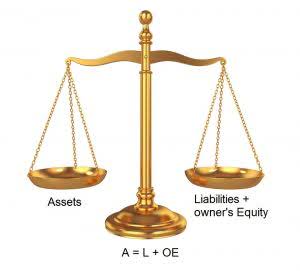
Managing Audit Risk: Auditor Tools to Mitigate Risk
- However, some companies lack stringent internal data governance, enabling potential misrepresentation or concealment of data from auditors.
- After all, understanding business nuances, stakeholder relationships, and company culture can offer insights no machine can decipher.
- Transactions are recorded by the cashier when receiving money from the customers for the generation of food tickets or receipts, which are redeemed for food.
- Also, auditor responses should not be too vague such as ‘increase substantive testing’ without making it clear how, or in what area, this would be addressed.
- An auditor will carry out their process believing that the provided information is accurate and well-maintained.
RMM is the risk that the financial statements are materially misstated before the audit. In order to reduce the complexity of minimizing audit risk, auditors utilize a suite of sophisticated tools designed to enhance the precision and reliability of their work. These tools are not just efficiency enablers; they are crucial in deepening the auditor’s understanding of the financial audit risk model landscape they navigate, ensuring that no stone is left unturned in the quest to validate financial statements. Inherent risk and control risk, deeply rooted in the entity’s operations and its surrounding environment, demand an auditor’s astute evaluation. These components require a thorough analysis at both the overarching financial statement level and the more granular assertion level. Auditors can manage detection risk by carefully planning the scope, timing, and depth of their processes and evident collection so that any material misstatements are identified and addressed early on.
What is Internal Audit Department? (Responsibilities and More)

Responses are not as detailed as audit procedures; instead they relate to the approach the auditor will adopt to confirm whether the transactions or balances are materially misstated. Therefore, in relation to the risk of going concern, the response is to focus on performing additional going concern procedures, such as reviews of cash flow forecasts. They can however balance these risks by determining a suitable detection risk to keep the overall audit risk in check. The extent and nature of audit procedures is determined by the level of detection risk required to bring audit risk to an acceptable level. If inherent risk and control risk are assumed to be 60% each, detection risk has to be set at 27.8% in order to prevent the overall audit risk from exceeding 10%.
- Unlike inherent risk and control risk, auditors can influence the level of detection risk.
- Detection risk is the risk that audit evidence for any given audit assertion will fail to capture material misstatements.
- The auditor is not responsible for fraud, but they are responsible for providing reasonable assurance to the users of financial statements.
- The path to corporate excellence is paved with genuine introspection, of which audits are an integral part.
- A GRC (Governance, Risk, and Compliance) automation tool like Sprinto, with its dedicated audit dashboard, makes things easier for both the business and the auditor.
Governance is important to monitor and oversee the quality of the assumptions used in the various models, and to intervene if competing models are presenting divergent outputs and causing confusion. Dr. Patchin Curtis, director, Deloitte & Touche LLP in the United States, and leader of Deloitte’s Center for Risk Modeling and Simulation, discusses the whys and hows of making risk modeling an integral part of enterprise risk management. Let us understand the various ways and means to minimise and control this type of risk in business.
- First, the act of creating a model inherently involves stripping away extraneous information so that only the essential elements remain, thus reducing a multidimensional problem to a more manageable form.
- Inherent risk is also more likely when the transactions in which a client engages are highly complex, and so are more likely to be completed or recorded incorrectly.
- The book covers many areas of audit and focuses deeply on performing a risk-based audit approach.
- Audit risk is, and will continue to be, an important element of the Paper F8 syllabus.
- Published in Bookkeeping
